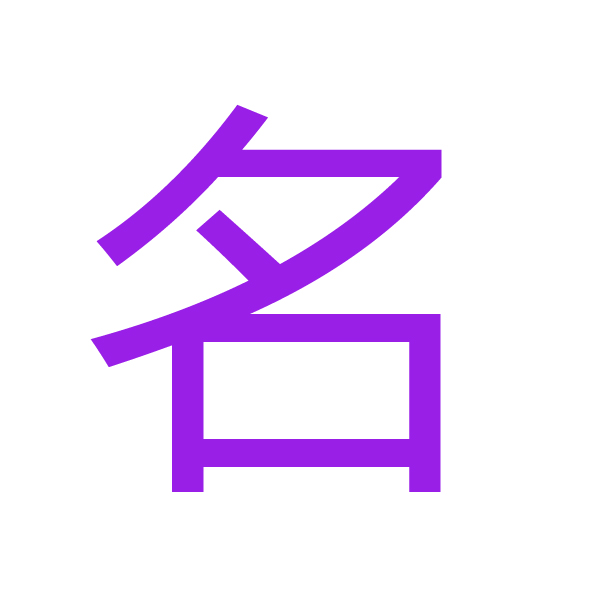
The Kanji: 名 (Na/Mei/Myō) - The "Name" Kanji
The kanji "名" is a profoundly important character representing the concept of a "name," "reputation," or "fame." It beautifully combines two simple elements to create a concept fundamental to human identity and society.
1. Meaning and Usage
Core Meanings: Name; reputation; fame.
Readings:
Kun'yomi (Japanese reading): な (na), な- (na-)
On'yomi (Chinese reading): メイ (mei), ミョウ (myō)
Common Words and Compounds:
名前 (なまえ / namae) - Name
名字 (みょうじ / myōji) - Surname; family name
有名 (ゆうめい / yūmei) - Famous (Having a name)
名称 (めいしょう / meishō) - Name; title
名物 (めいぶつ / meibutsu) - Local specialty; famous product
2. Writing and Stroke Order: A Logical Combination
The correct kanji writing for "名" is a classic example of a kanji composed of two clear components. Its stroke order is simple but must be precise for proper balance.
Stroke Order:
The character is composed of the top component 夕 (evening) and the bottom component 口 (mouth).
Top Component (夕 - Evening):
Stroke 1: A left-falling stroke.
Stroke 2: A right-falling stroke that crosses the first stroke.
Stroke 3: A dot in the upper-right space.
Bottom Component (口 - Mouth):
Stroke 4: Left vertical stroke.
Stroke 5: Top horizontal and right vertical stroke (one continuous motion).
Stroke 6: Bottom horizontal stroke.
Significance of Correct Kanji Writing:
Proportions: The top 夕 and the bottom 口 should be of roughly equal width. The character should feel balanced, not top-heavy.
Component Recognition: Understanding the two components is the key to unlocking the character's original meaning.
Foundation: Mastering this top-bottom structure is helpful for many other kanji.
3. Historical Origin and Evolution
The history of "名" provides a fascinating glimpse into ancient life and the origin of names.
Oracle Bone Script (甲骨文字):
The original character was a clear and logical ideogram. It combined:
口 (kuchi): A pictogram of a mouth, representing speech or calling out.
夕 (yū): A pictogram of the crescent moon, representing night or darkness.
The Conceptual Origin:
In the dim light of evening (夕), when it becomes difficult to see and recognize people, one must use one's mouth (口**) to call out a name to identify someone. Thus, the character "名" was born from the need to verbally identify individuals when visual identification was impossible.
Bronze Script & Seal Script:
The form became more stylized, but the relationship between the "evening" (夕) and the "mouth" (口) remained clearly visible.
Modern Form:
The modern "名" is a direct and clean descendant of its ancient form. The components are perfectly standardized, preserving the original logic: a name is what is spoken into the darkness to establish identity.
Philosophical and Cultural Connection:
In Japanese culture, a "name" (名) carries immense weight. It is not just a label but is deeply tied to one's identity, honor, and reputation.
名前に恥じない (Na ni hajinai): To live up to one's name; to not bring shame to one's name.
名を成す (Na o nasu): To make a name for oneself; to achieve fame.
The character embodies the idea that a name is the verbal essence of a person, place, or thing's identity, used to call it into being, especially when it cannot be seen.
Summary
The kanji "名" is a character of elegant simplicity and profound meaning. It began as a literal representation of the need to call out a name in the darkness of night and evolved into the universal symbol for name, identity, and reputation. Mastering its stroke order is a fundamental step in Japanese kanji writing, as it is an extremely common character. When you learn how to write kanji like "名," you are not just learning a word for "name"; you are learning a character that encapsulates the very concept of identity itself—the spoken word that defines who we are in the world.